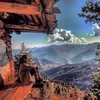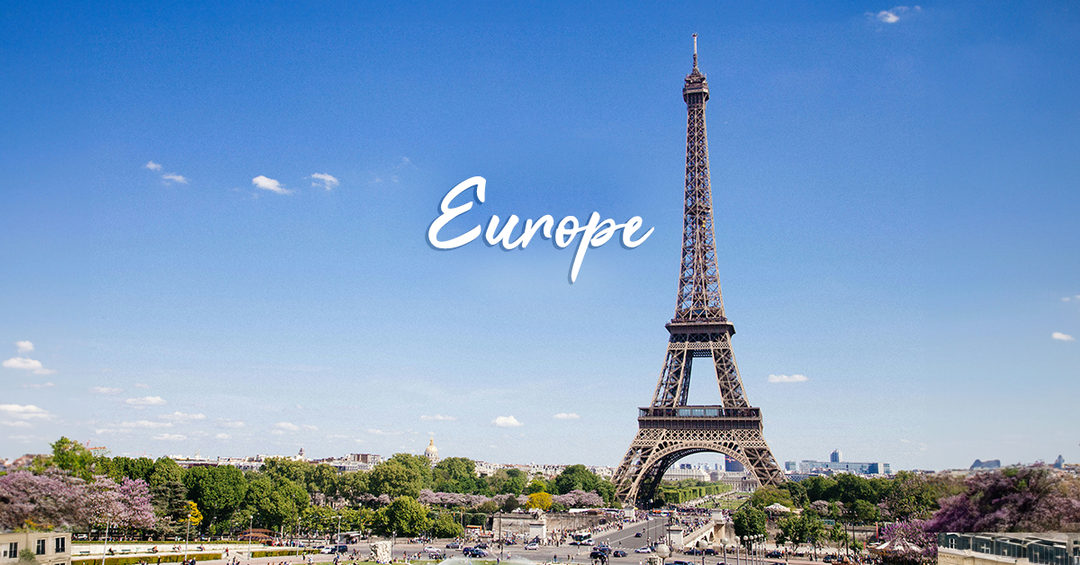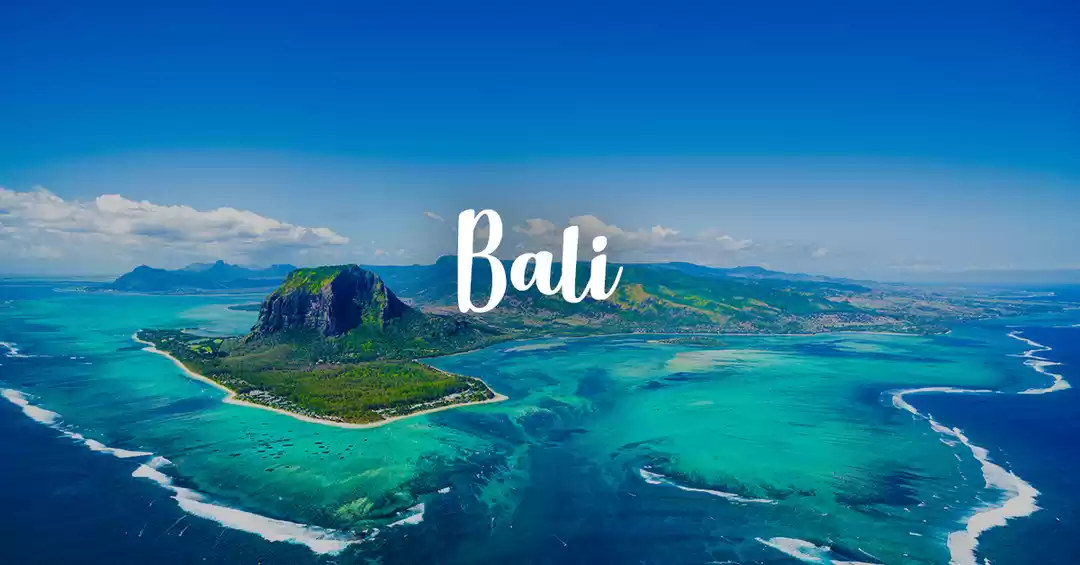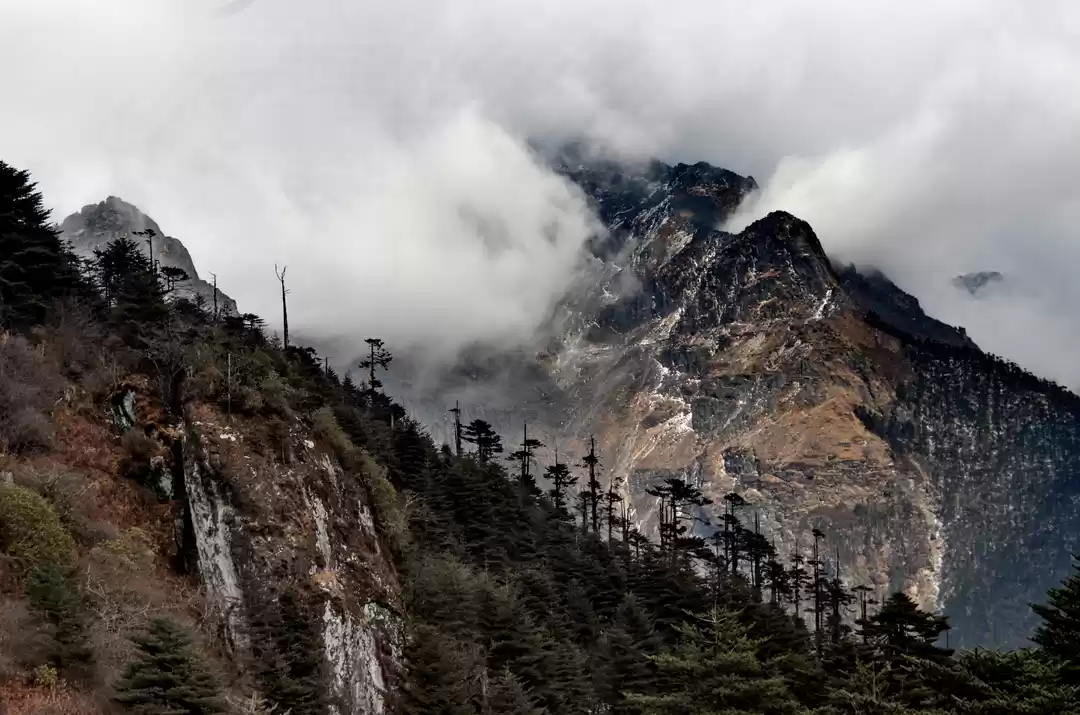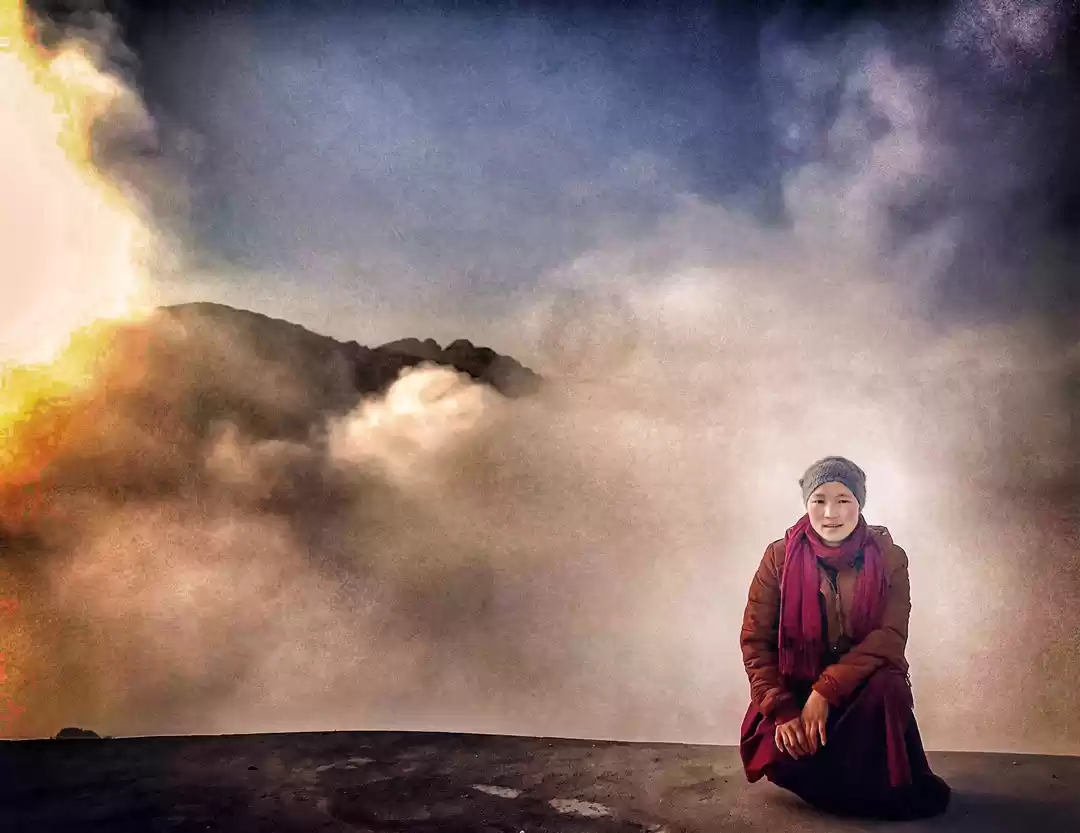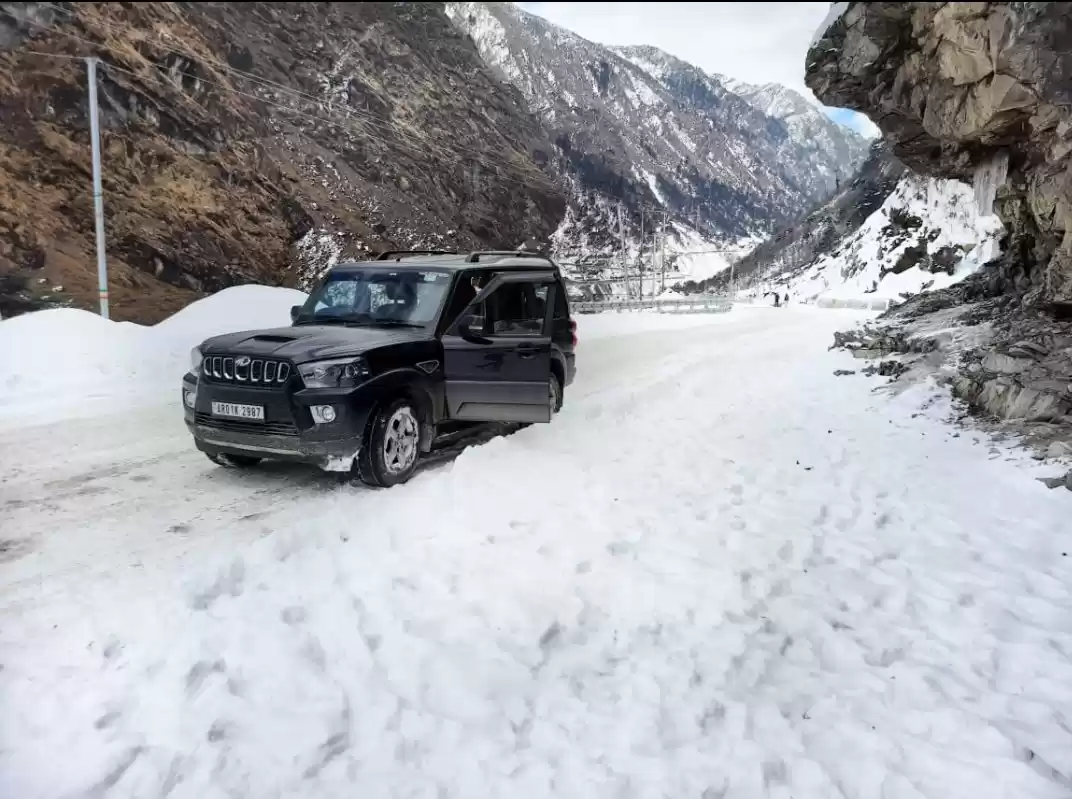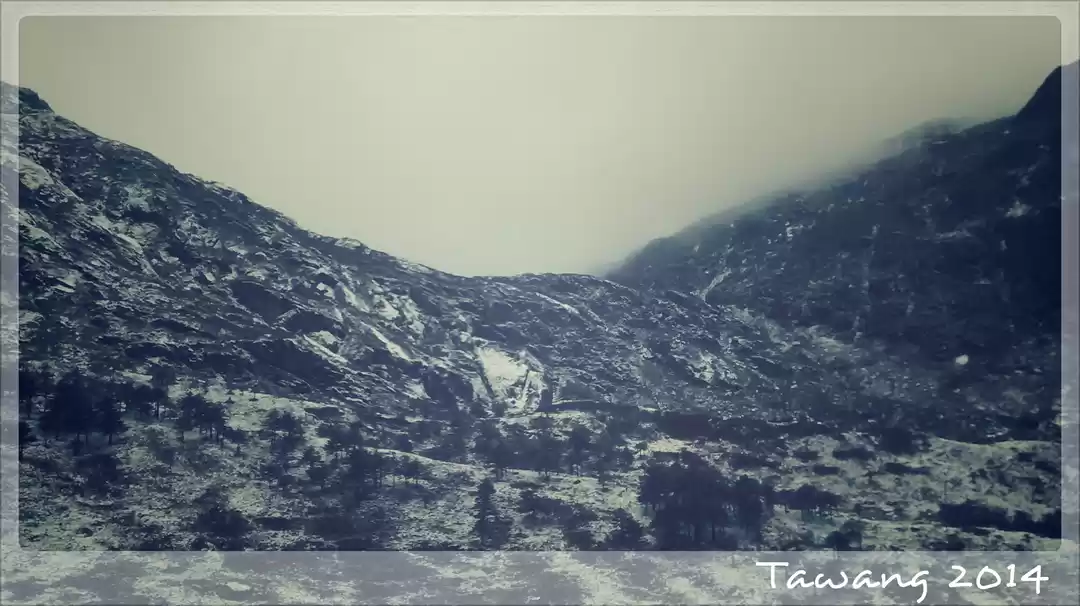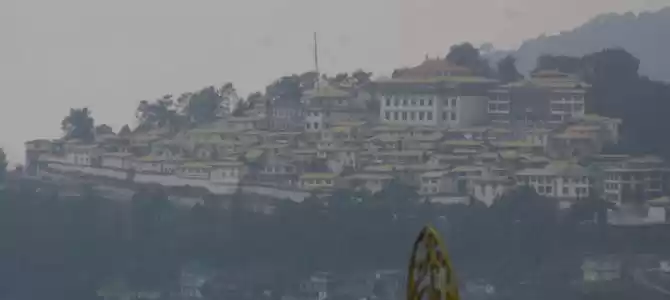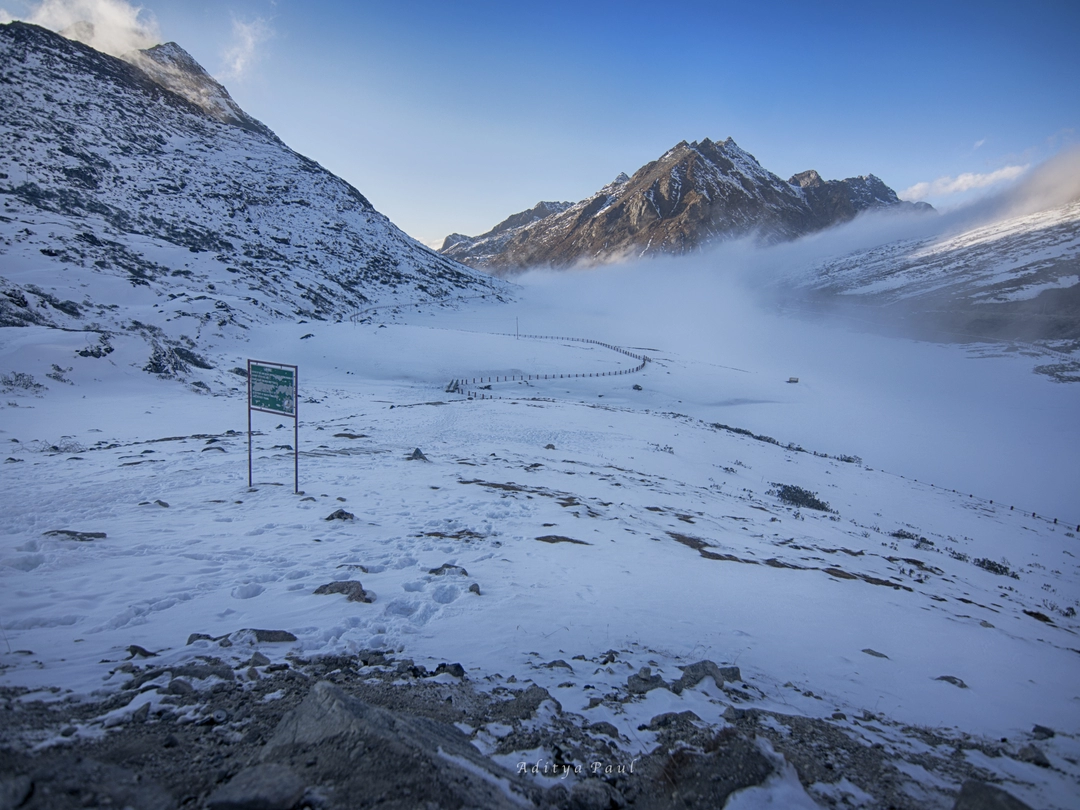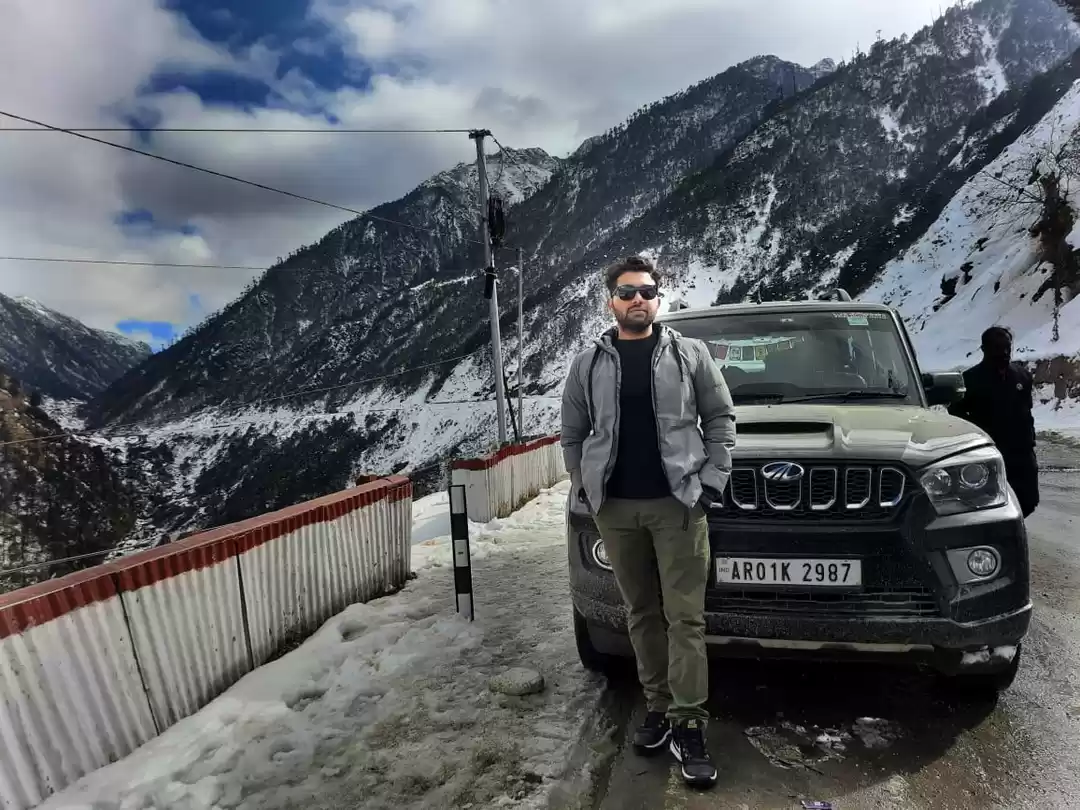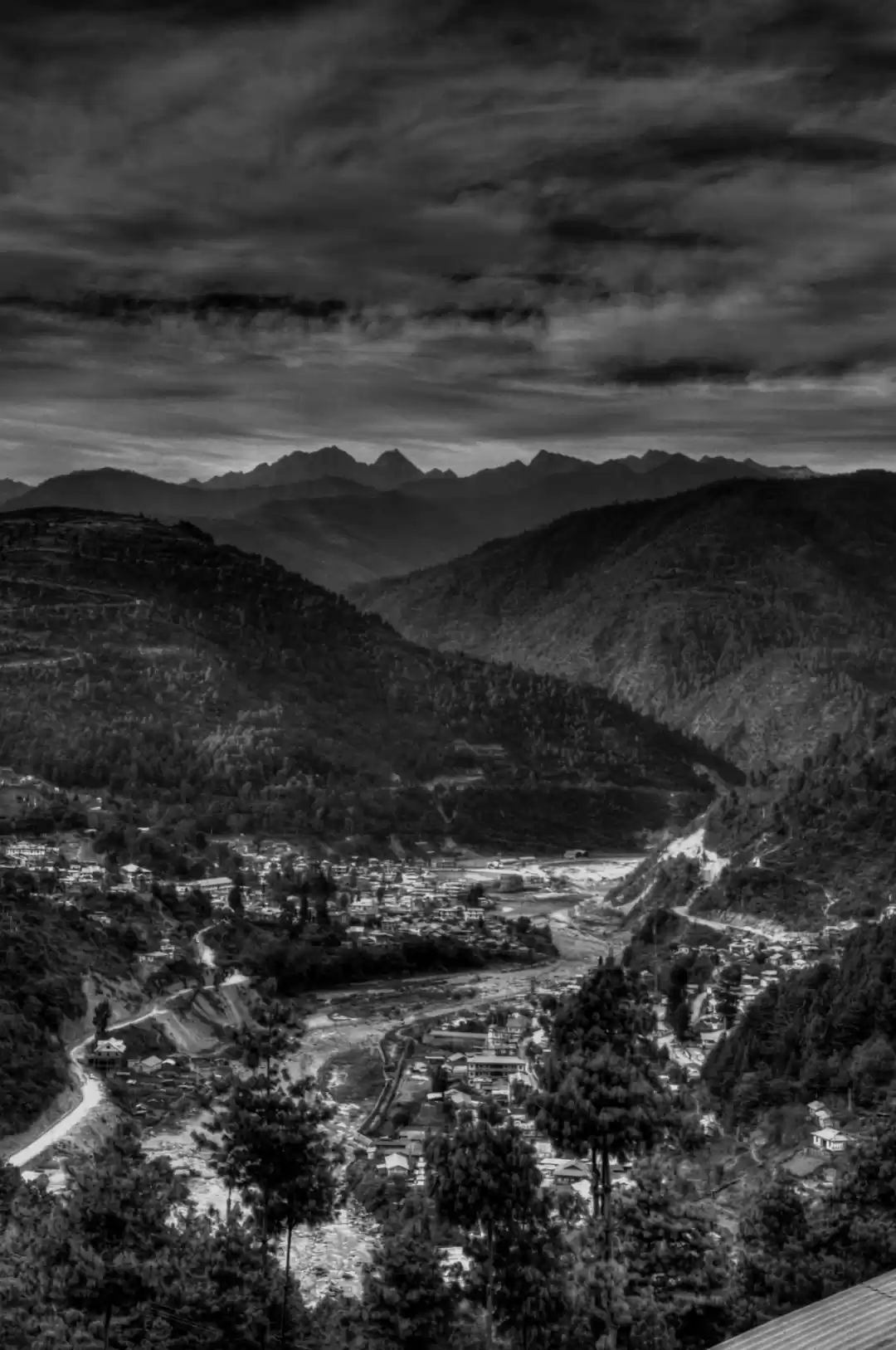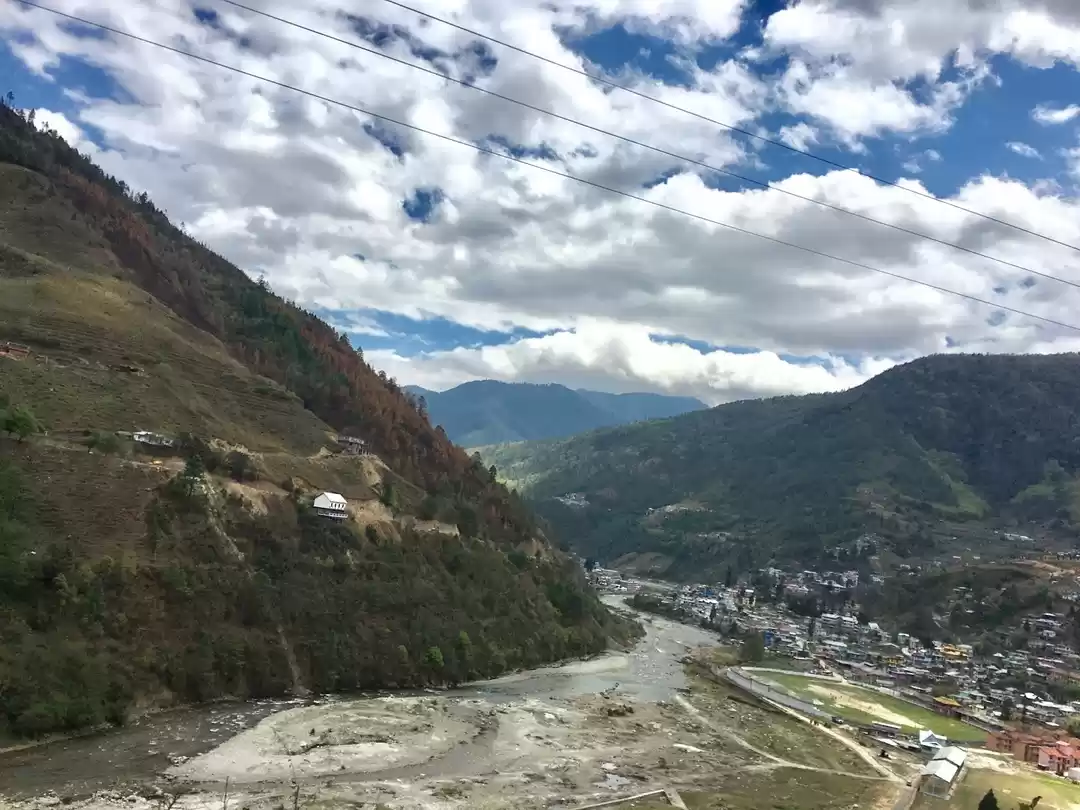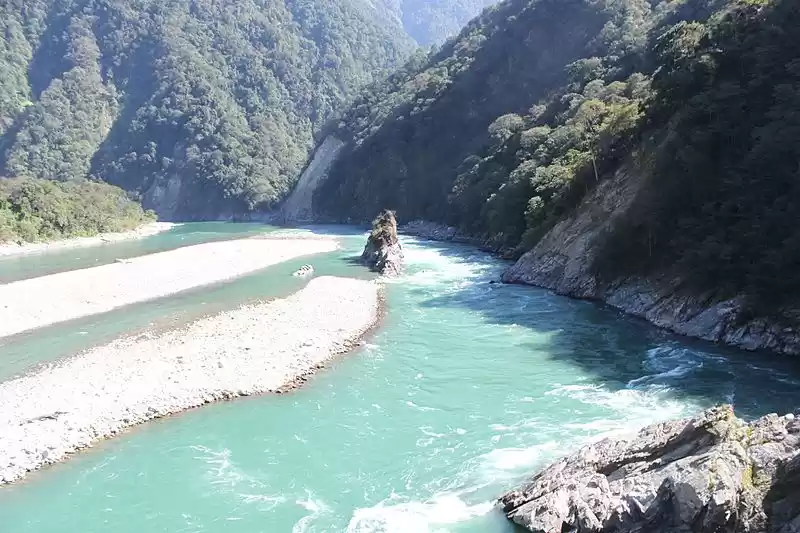
Swinging along with my co travelers who happen to be all Monpas, in a jam packed trundling Sumo, i find myself in a constant dilemma of uttering Ouch or Wow! The driver is huddled in a corner, sitting one person away from the gear. Trust the public transport and the roads less taken in the northeast to give that much needed adrenaline rush. What more? A TSeries song from the 90s plays on the drivers pen drive “ Mai Deewani Apne Saajan ki, the chorus repeats ‘Deewani three times..Deewani Deewani Deewani”! I think of the lyricist who came up with such interesting lyrics, just when a giant statue of Tara Devi ( The Durjen Lumpa) emerges in the backdrop,on a mountain top, interrupting my thoughts! I’m instantly reminded of the famous quote ‘difficult roads often lead to beautiful destinations’!
Zemithang ( locally pronounced as Zimithang) is a small cut off hamlet, sandwiched between Bhutan and Tibet. Zemi means Sand and Thang is a place.It literally means the land washed away by river. The natives here are known as Pangchen meaning ‘a person free from all sins’. A place called Khinzemame, a little ahead of Zimithang is where the present Dalai Lama crossed into India from China in 1959.

Small villages perched on the mountains bask in the last rays of the day. Namjang Chu (the river) hustles around breaking the monotony in the air. The man sitting next to me suddenly joins his hands and bows his head out of respect as the sumo whizzes past this massive White Chortan, almost 100 ft tall,called the Gorsam Chorten,a replica of Boudhanath in Nepal. I am told by the man that the chortan has a huge religious significance and opens up once in 12 years when Buddhists from all around India, Nepal, Bhutan and even Tibet come offer their prayers. It is said to have taken 13 years to build. Also a big 3 day mela takes place every year in March where Buddhists from different parts of India come display their stalls selling home made products and handicrafts as well as hand looms.
I landed at my home stay in a village called Kharman. I was going to spend a day here living with a local Monpa family, seeing this part of my country that never existed in my knowledge, doing things their way. Its pitch dark and there’s a power cut. Luckily the solar lights are on. I sit with Rinchin along with his daughter Jowa around the bukhari, sipping on the local butter tea! ( I’ve probably had more tea than ever in my entire life in this one week of travelling in Arunachal).Tea always acts as an ice breaker and conversations overflow with time. Rinchin is a cook at a local office while Jowa runs the home stay along with her younger sister. They are five siblings, the youngest being a 4 year old boy! Looks like the preference for a male child is a universal norm.


I woke up the next morning to yak bells outside my room. Jowa and I decided to hike up to Lumpo and Muchet, villages on hilltop with beautiful monasteries. On my way up trailing behind Jowa who climbed so briskly I asked her about the local farming. I was quite taken aback to know that farming is no longer done professionally. The Pangchen community believes in preserving wildlife and the villagers would suffer huge losses for the wild pigs and deer would harm their crops. Since they don’t believe in hurting animals, it became difficult to maintain their crops. Most of the locals work for either GREF or as private laborers, collecting and selling sand and stones. ‘And what about homestay?’ I asked? She scoffed ‘ Homestay! Madam, the last guest came five months before you, no one knows about Zemithang. People only come till Tawang and head back.’ I was now determined more than ever to write on this piece of heaven for it deserved much more love!

Namjangchu sparkled in the sun deep down in the valley as i stood at the Lumpo Gompa under the mighty Guru Rimpoche statue looking down at the valley like a guardian angel. Jowa tells me how one gets to see all Chinese garbage in the monsoons for Namjangchu starts flowing from China, to Arunachal then to Bhutan and finally lands at Assam. I joked, ‘So Assam bears the brunt of undisciplined garbage disposal of all the three countries eh!?’
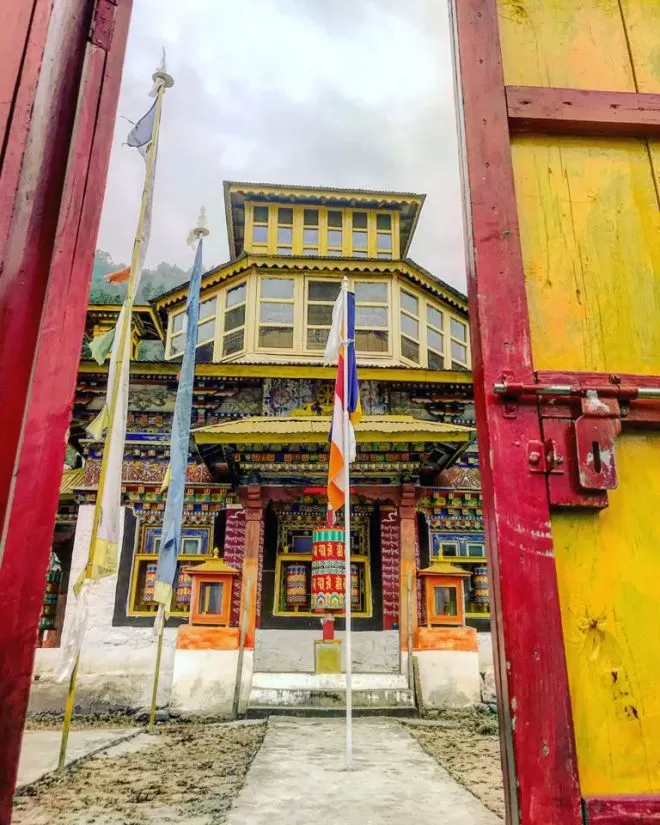
We hiked from Lumpo to Muchet, a tiny village that turned out to be my favorite with a spectacular three storeyed bright colorful gompa. A quick bite back at Zemithang and we further hiked up to the Gorsam Chorten. It had been eight hours of constant hiking and walking around the villages but never did i feel tired for every hamlet offered a new surprise. Huge houses made of stones and wood dotted the landscape in Kelektang and upper Kharman villages. They stood like sentinels of time etched with stories from eons ago. An exceptionally humongous stoned wall house stood at the farthest end of the village. The legend has it that it belonged to the Queen of Tawang, centuries ago. She was the second wife of the king who possessed the powers of demon and wooed the king while he came to this side for hunting while the first wife was considered to be an angel who hailed from the Bomdila region.These stone houses are locally called Sikpa Khem and the three storeyed ones are known as Zangduperi. ( not sure if i spelled it right..written on the basis of my host’s pronunciation)

Seeing me huffing and puffing my way up the steps made of stones in the village, Jowa asked me, ‘Madam paani peeyega’ I nodded, ‘Yes Please’! We decided to stop at this lady’s house for water which turned out to be a long chit chat session over a cup of namkeen chai with murmuras( white puffed rice) dipped in it along with freshly cooked Khupsey ( a sweet snack made for Losar). I asked the host lady if I could borrow the red hat donned by her called SIRJZA. She said ‘aapka juuda kholna padega’ I quipped ‘kholega but darna mat since my hair would have been all over the place” and when i finally left it loose, she went like “Madam kahaan se khareeda itna saara baal?’ We all cracked up at that moment. Apart from her great sense of humor, I was mighty impressed with her impeccable Hindi. Her many relatives had come over for Losar preparations which was just a week away. I asked them if they all got together and performed their folk dance called Aji Lhamu. Sadly the present generation doesn’t practice the traditional rituals much and in order to learn the dance, they call people from Lumpo where villagers are more into the old traditions. She said ‘ hum toh Aara and Chang peeyega aur dost log ke ghar jaayega.’ (Aara and Chang are the local wines made out of fermented rice and corn.)


After reaching the home stay,Jowa made the most delish momos and I also tried their local cuisine called Churpi and Zann. We were exhausted with almost ten hours of constant hiking but weren’t done for the day.The girls were excited to show me their dresses that they planned to wear on Losar. I so wanted to try their traditional dress before hitting the bed. Jowa and I both wore the Shingka along with Dojzu( the black hat made of yak hair) and we posed with tired faces but genuine happy smiles ????

Later that night,while writing my diary,my pen scribbled the words in synchrony with the chimes of the prayer wheel outside my window. My heart was full,content and filled with gratitude. Over the last five years, I’ve traveled around the countryside, meeting incredible tribes from different regions, at times camping in a cave at 4200amsl with local Himachalis, living with yak herders in Bhutan, staying with the Gaddi Shepherds of Dhauladhars, introspecting while living with the nuns at a gompa in Arunachal and calling innumerable homestays my home, each of them weaving new stories that folks like you and i might have never known.The simplicity of people and their unconditional love for a random traveler awes me every single time. The places might change, people might differ but the warmth and love i receive every single time is the same …same old!
TRAVEL and HOMESTAY INFO
Zemithang is a small town/hamlet located 70 kms ahead of Tawang on the Lumla axis. Its surrounded by Bhutan and Tibet.
There are two ways to get to Zemithang. You could either catch a bus from the Tawang bus stand. The bus ticket would cost you Rs 170. PS: the buses do not operate on Sundays. Other option which is mostly preferred is the shared sumos charging Rs 250 for a ride till Zemithang. Try grabbing the front or the middle seat to avoid bumps and motion sickness. The Sumos are available at the bus stand itself.
In case you want to book the sumo in advance, here’s the contact. 9402404085. Because at times it isnt easy to get one.
Lumla is half way Zemithang and is famous for the huge Tara Devi statue on a mountain top called The Durjan Lumpa. ps: the sumos dont stop there though. one has to take a detour from the break point.
One will find Tashi cell network( Bhutanese service provider) here for Bhutan is just 30kms away. No other network works beyond Lumla except BSNL.
I stayed at Rinchin Tsewang Homestay in a village called Kharman, a kilometre ahead of Zimithang. The family is extremely warm and helpful. Jowa guided me around the villages and hiked along to the gompas. She also makes the best momos everr!
Here’s Rinchin’s contact…9402030387. The homestay is comfortable with clean bedrooms. The washroom is in the household premises but not attached. Remember you are in a cut off world where basic amenities are a luxury. They charge Rs 750 as rent with complimentary dinner.
Mr Dorjee, a very kind gentleman who helped me with Rinchins contact is also coming up with his own homestay ( its almost done). Here’s his contact 9402859651.
Every season has a different charm here. If you wish to see snow then winters is a good time though it was pretty hazy when i went. I believe the place is at its prettiest best during the monsoons in July and August though the roads are in a pathetic state due to landslides and i’m not sure if you’d be able to hike around much. March to April and Sep to October seems ideal.
Things To See In and Around Zemithang/Zimithang
Just as you enter you’d come across the huge Gorsam Chorten. Built by Sangay Pradhar( a lama), its 7 centuries old and holds a big religious significance. The locals host a mela here every year in March and it opens up once in 12 years.
Hike/ Ride up to T Gompa also called the Taktsang Gompa which is 30 something kms from here. It is considered as one of the holiest Buddhist shrines in Arunachal. Guru Padmasambhavas footprints are said to be imprinted in this shine as he meditated here in the 8th century.This place is also famous for Red Panda sightings.
T Gompa is just 2 kms from the very famous Sangetsar/ Madhuri lake. one can plan on doing both these places together. Though you do need a vehicle going up to this place for a taxi would charge a bomb for the same. i couldn’t find any locals going that way for every one was caught up preparing for Lossar, making trips to Tawang instead.
Black Necked Cranes migrate to this side in winters. If you are lucky, you can spot them at Namjang Chu river.
Hike up to Gompas at Muchut and Lumpo. I hiked up to Psamdamcheling Gompa at Muchut and Lumpo Gompa (further ahead on top with a huge Guru Rimpoche statue).One can further hike up to Lumpo Village from the gompa. The village is just a stones throw away from Tibet border.
Must do a village tour of the upper Kharmen and Kalakteng villages in order to witness the old traditional monpa houses made of stones, mud wood and bamboo.
for more pictures and short stories check out my instagram
https://www.instagram.com/akankshasiwach/?hl=en
Frequent Searches Leading To This Page:-
Service Provider of Arunachal Pradesh Tour Packages, beauty of northeast arunachal pradesh, Book Tawang Tour Packages, Honeymoon Arunachal Pradesh Tawang Tour package, Arunachal Pradesh Tour features


We enter a no network zone but hey ‘Tashi Cell’ constantly shows up on my mobile screen. I am thisss close to Bhutan!
Rinchin tells me how WWF people make frequent visits to their villages,to make documentaries on wildlife. Red Panda, which also happens to be the local mascot, is often spotted by him while he’s in the upper reaches finding greener pastures for his cattle. His cow shed has a tree which bears a local fruit called ‘Lejzu’ which happens to be Pandas favorite feast apart from Bamboos. The other wildlife includes Blue Sheep Takin, Black Bear, Pheasants, the gorgeous Rhododendrons and some rare medicinal plants( like Yarchagumba) that are locally called ‘Jadibutis’ which are sold worth lakh a kilo to other countries. He speaks in a rather sad tone “ Is saal black necked cranes ek bhi nahi aaya’ This rare species of bird which usually migrates to this side in winters was not found at the river banks for there’s heavy machine work going due to construction of a hydro electric project( a 780MW Nyamjang Chu HEP of the Bhilwara Group is coming up). I sigh thinking of us humans taking away their habitat…little by little..day by day!
Ps: The Black Necked Crane is not only a threatened bird but also revered as the incarnation of the 6th Dalai Lama for the Monpas.
While leaving her place, she asked me to come visit her again and told me to show her pictures to Ajay Devgan if i ever go to Bombay! That explained a lot about her flawless Hindi. People in this remote area love Bollywood and often pick up cds like 10 movies for 100 bucks in Tawang. So what if there are no cinema halls!

